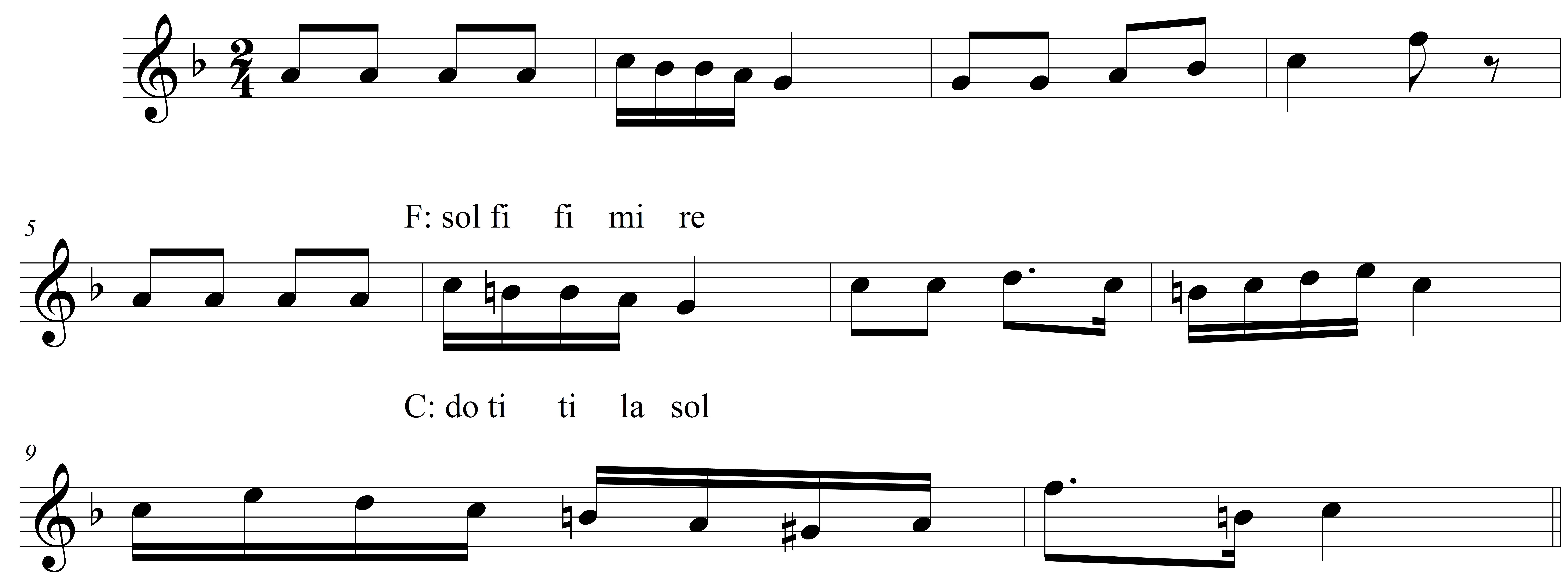Integrated Aural Skills 2018-19
Pivots in Melodic Dictations
When you identify a modulating melody, the key to ascertaining harmonic movement is to look for a point in the melodic line that contains a pivot. This is a note, or collection of notes, that indicates a “turnaround” in the implied harmony towards the new key.
In many cases, you’ll be able to identify the new do by its ti. Wherever ti is found, do isn’t far away; therefore, the first note you’re likely to hear that is outside of the key signature is the ti of the new key.
In this example from Schubert’s well-known Lied “Heidenröslein,” the accidental in measure 6 indicates the shift to C major (the dominant). Fi – a chromaticism in the home key – indicates the new ti.

In this example from Luigi Boccherini’s famous Minuet, the D-sharp – fi in A major – similarly indicates ti in the new key, E major.

Things to take away from this: in diatonic melody, fi is not “normal.” If you hear fi in a dictation, this is a strong clue that you are now hearing ti in the new key – that the implied harmony is V/V or V7/V. Ti, of course, is “normal” – and tells you where your new do will be.